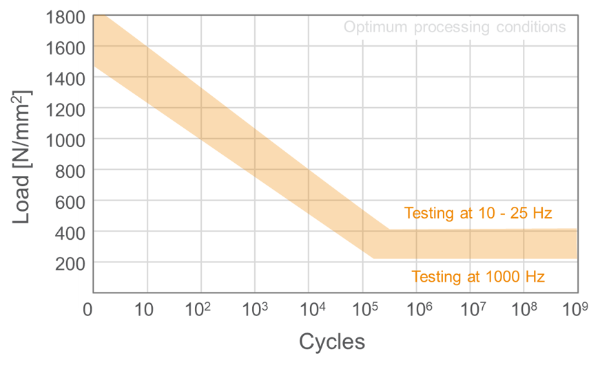Durability of Amorphous Alloys
Good Fatigue Strength
The fatigue strength of materials used in engineering is an important mechanical characteristic. While it is commonly understood that amorphous metals may not match the fatigue resistance of many crystalline materials, certain amorphous alloys can demonstrate comparable fatigue resistance, suggesting that amorphous metals can perform well in fatigue. Factors such as alloy composition, processing methods and surface finishes can influence the fatigue resistance of amorphous metals.
Processed under optimal conditions, the strength values of Zr-based amorphous metals are roughly the reverse of conventional materials: The fatigue strength at 1 billion cycles at 25 Hz falls within the range of 400 MPa, while the fatigue strength at 1 billion cycles at 1,000 Hz lies within 250 MPa.

High hardness
Amorphous metals are renowned for their exceptional hardness, their dislocation-free atomic structure prevents the movement of dislocations and enhances their resistance to deformation. The absence of grain boundaries further contributes to their hardness, allowing them to withstand high levels of mechanical stress and wear. As a result, they are widely used in applications where hardness and durability are paramount, such as in the production of high-performance tooling, wear-resistant coatings, and precision components.
Low damping rate
Amorphous metals are known for their low damping rate, which refers to their ability to dissipate mechanical energy and vibrations efficiently. This property makes them valuable for applications where precise control over vibration and noise is essential such as in aerospace, automotive, and sporting equipment. For instance, bending joints, hinges, gripper units, and spring components can be utilized effectively and assembled to ensure long component life.


